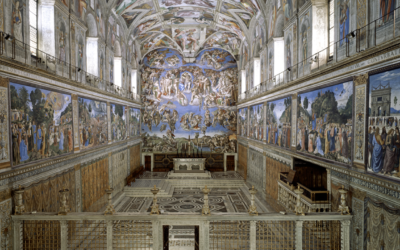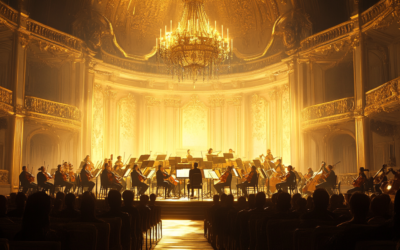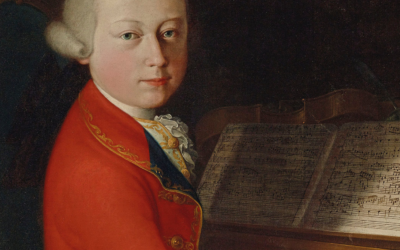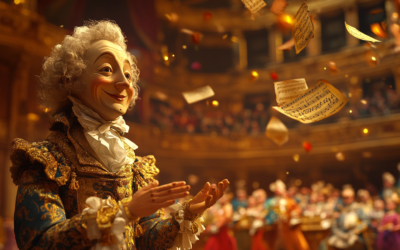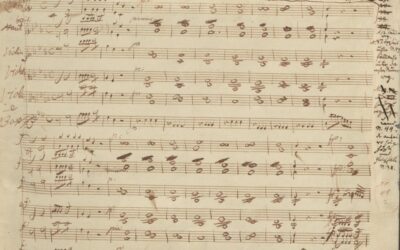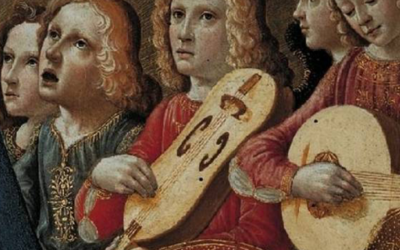The Myth of Mozart’s Sight-Reading Genius
A Closer Examination
In the 18th century, exaggerated accounts of Mozart’s abilities were as common as they were fantastical. Yet, detailed reports from figures like Daines Barrington and André Grétry reveal a far more human side of the prodigy, whose skills, impressive though they were, did not amount to the miraculous feats often attributed to him.
Mozart: The Fall of the Gods
This book offers a fresh and critical look at the life of Wolfgang Amadeus Mozart, challenging the myths that have surrounded him for centuries. We strip away the romanticised image of the “natural genius” and delve into the contradictions within Mozart’s extensive biographies. Backed by nearly 2,000 meticulously sourced citations, this work invites readers to explore a deeper, more complex understanding of Mozart. Perfect for those who wish to question the traditional narrative, this biography is a must-read for serious music lovers and historians.
"Even the most lauded prodigies sometimes hide a kernel of reality beneath layers of myth."
Mozart: The Fall of the Gods
Separating Fact from Fiction in 18th-Century Reports
In the concert posters promoting young Wolfgang Mozart, he was lauded as a prodigy capable of sight-reading even the most difficult pieces flawlessly. Such claims, often more fantastical than credible, warrant closer scrutiny. Two notable contemporary accounts diverge from the usual paternal praise or the laudatory articles seen in 18th-century newspapers. One is a scientific report from London, penned by Daines Barrington (1727–1800), a member of the Royal Society. The report, dating from June 1765, was finalized in 1769 and presented on February 15, 1770, a full five years after the original test.
Barrington was a multifaceted figure: a barrister, antiquarian, and naturalist with a penchant for ornithology and a fascination for musical prodigies. His book, a curious collection of studies ranging from the origins of turkeys to the melodiousness of birds, often employed flowery and exaggerated language. Perhaps Barrington’s fondness for child prodigies contributed to the surge in popularity of such marvels in England. He documented not only the Mozarts but also other youthful musicians like the Wesley brothers and William Crotch. Yet, his approach lacked scientific rigour, often relying on hearsay and questionable sources.
Barrington’s report on Mozart was no exception. In his experiment, he presented a manuscript duet, its composer unspecified, to test Mozart’s sight-reading skills. The piece was from Metastasio’s Demofoonte, arranged for two vocal parts and strings. Curiously, the vocal parts were written in the alto clef, which Barrington highlighted as if it were a major obstacle. Despite this build-up, Wolfgang executed the symphony introduction “masterfully,” as Barrington put it, then sang the upper vocal line while his father Leopold tackled the lower. Leopold faltered, eliciting disapproving looks from his son, who even corrected his mistakes. Barrington claimed that Wolfgang not only sang beautifully but also embellished the accompaniment with violin parts to enhance the musical effect.
A closer analysis reveals that the test was calibrated for both Mozarts, and Wolfgang, not surprisingly, outperformed his father. Stripping away the superlatives, we see that Wolfgang competently played the bass line with his left hand and added occasional violin parts with his right. Impressive for an eight-year-old, certainly, but not the miracle Barrington made it out to be. His comparison of the duet’s difficulty to reading ancient texts like Etruscan and Greek reveals his musical naivety. Instead of a supernatural feat, the performance was a well-practiced skill honed by Leopold to impress the general public.
Even more telling is a different account from André Ernest Modeste Grétry (1741–1813), a professional musician who tested Mozart in Geneva. When Leopold boasted of his son’s sight-reading prowess, Grétry composed a challenging sonata movement in B-flat major. Mozart played it, yet replaced several difficult passages with his own improvisations. The audience, except Grétry, was in awe. Grétry’s skepticism highlighted Wolfgang’s reliance on improvisation and lack of systematic study, a strategy that gave the illusion of mastery.
Mozart’s ability to read music, while exceptional for his age, fell short of true sight-reading as it’s defined today: a flawless, spontaneous execution of written music, requiring years of rigorous training and experience. Grétry’s observations dispel the myth of Mozart’s innate genius, pointing instead to his reliance on quick-thinking and a boldness typical of children.
You May Also Like
The Legend of Mozart’s Miserere
The enduring popularity of the narrative surrounding Mozart’s Miserere highlights the allure of the prodigy myth, but as we peel back the layers, we uncover a more nuanced picture of his life and the musical landscape of the time. The reality often contrasts sharply with the romanticized tales that have shaped our understanding of his genius.
Rediscovering Musical Roots: The World Premiere of Gasparini and Mysliveček
This December, history will come alive as the Camerata Rousseau unveils forgotten treasures by Quirino Gasparini and Josef Mysliveček. These premieres not only celebrate their artistry but also reveal the untold influence of Gasparini on Mozart’s Mitridate re di Ponto. A pivotal event for anyone passionate about rediscovering music history.
The Curious Case of Mozart’s Phantom Sonata
In a striking case of artistic misattribution, the Musikwissenschaft has rediscovered Mozart through a portrait, attributing a dubious composition to him based solely on a score’s presence. One has to wonder: is this music really Mozart’s, or just a figment of our collective imagination?
The Illusion of Canonic Mastery
This post explores the simplistic nature of Mozart’s Kyrie K.89, revealing the truth behind his early canonic compositions and their implications on his perceived genius.
The Unveiling of Symphony K.16
The Symphony No. 1 in E-flat major, K.16, attributed to young Wolfgang Mozart, reveals the complex truth behind his early compositions. Far from the prodigious work of an eight-year-old, it is instead a product of substantial parental intervention and musical simplification.
The Cibavit eos and Mozart’s Deceptive Legacy
The Cibavit eos serves as a striking reminder that Mozart’s legacy may be built on shaky foundations, questioning the very essence of his so-called genius.


